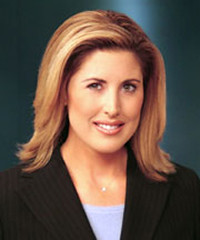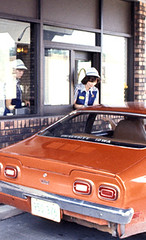It has been weeks. Six men remain missing, likely dead. Three rescue workers have lost their lives. Several have been seriously injured. Many more have suffered.
Yet, the media continues to report in microscopic detail. Everyone from the man on the street to Utah Gov. Jon M. Huntsman has offered opinion. And mine owner Robert Murray continues to miscommunicate at every turn, including his insistence that a seismic shock was responsible for the collapse despite evidence that suggests otherwise. The mine is unsafe.
"Not all seismic activity is what it looks like," said Jim Pechmann, who has been a seismologist for more than 20 years. "The reported activity was undoubtedly related to the mine collapse."
A few weeks ago, someone had asked that perhaps the Crandall Canyon Mine would make for a case study so public relations students might learn how to better plan for and handle crisis communication; perhaps after our hearts have healed.
With as many communication mistakes as have been made during this tragedy, I’m unconvinced our hearts will ever heal. So, my comment today is with the hope that those involved might handle the conclusion better than they have the last few weeks.
First and foremost, while some principles remain true, crisis communication and disaster response or emergency communication are not the same. Had Murray been advised of this, perhaps some of the communication would have played out differently. You see, in the midst of a disaster, there is no room for speculation, presumption, guesswork, media conference teases, and emotional rally cries that more cause pain and suffering beyond the tragedy.
Without question, an entire book could be written on the many missteps of the Crandall Canyon Mine communication. For us, the best that can offered up are a few tenets in a series of well-spaced apart posts, starting with a few basic principles that were missed during this disaster (and why some communicators will still get it wrong next time).
Situation Analysis. While some public relations practitioners suggest rapid-fire response and up-to-the-minute detail, nothing outweighs accuracy. All too often throughout this crisis, the pressure to educate not only overshadowed proper fact-gathering, but also infused itself into the decision-making process that quite possibly led to increasing the risk to rescue workers. There seems to have been little regard for assessment, which has frequently led to the release of erroneous information and overreaching conclusions.
Identify Crisis Team. Many public relations practitioners conclude that a principal such as Murray should be made spokesman. This is not true. With exception to the biggest news breaks in the story, Murray was not a suitable spokesperson and would have been better served focusing all of his attention on the rescue efforts. A different spokesperson could have kept reporters up to date and stories focused on facts with occasional input from reputable specialists as needed.
Prioritize Publics. In this case, the first people to receive any updates should have always been the families of those affected. Affected families should never have to learn new or conflicting information from the news. The second priority are other team members: rescue workers, and response partners (including medical personnel), ensuring that if they do answer media inquiries, miscommunication is minimized. The third priority is government officials; people to whom the media are likely to turn for additional comment. And then, and only then, can the media receive updates that are centered on major news items and not miniscule detail.
Narrow The Message. In today’s world, communication happens at the speed of light. All publics receive it quickly and react very differently. While all information will eventually be released (it pays to be truthful), a spokesperson must keep the issues manageable and the focus narrow. Wild claims without evidence are fraught with peril: it is always best to remain hopeful for the best outcome, but prepare people for the worst.
Accept Responsibility. Murray’s inconsistent and often emotionally charged communication over the last three weeks has demonstrated one simple truth: all mishandled communication happens from the inside out. Even if Murray was right, that an earthquake caused the collapse, there was never time to angrily defend his company's safety record and its efforts to reach the trapped miners. Doing so only demonstrated a lack of empathy to the families, eroded reputation, and worse, positioned Murray as someone who cared more about his company than the men who lost their lives.
Although most people can understand the pressure Murray must feel, someone needs to tell him that it doesn’t matter who or what is to blame. Sometimes, no matter what the cause, you have to accept responsibility (if not accountability) all the same.
Our hearts and prayers go out to the families. If you would like to lend assistance, read today’s story in The Salt Lake Tribune that includes a variety of funds that have been established. If there is anything good to be found in this story, it is in the generosity and sympathy extended by people from across the country. Well done.

Yet, the media continues to report in microscopic detail. Everyone from the man on the street to Utah Gov. Jon M. Huntsman has offered opinion. And mine owner Robert Murray continues to miscommunicate at every turn, including his insistence that a seismic shock was responsible for the collapse despite evidence that suggests otherwise. The mine is unsafe.
"Not all seismic activity is what it looks like," said Jim Pechmann, who has been a seismologist for more than 20 years. "The reported activity was undoubtedly related to the mine collapse."
A few weeks ago, someone had asked that perhaps the Crandall Canyon Mine would make for a case study so public relations students might learn how to better plan for and handle crisis communication; perhaps after our hearts have healed.
With as many communication mistakes as have been made during this tragedy, I’m unconvinced our hearts will ever heal. So, my comment today is with the hope that those involved might handle the conclusion better than they have the last few weeks.
First and foremost, while some principles remain true, crisis communication and disaster response or emergency communication are not the same. Had Murray been advised of this, perhaps some of the communication would have played out differently. You see, in the midst of a disaster, there is no room for speculation, presumption, guesswork, media conference teases, and emotional rally cries that more cause pain and suffering beyond the tragedy.
Without question, an entire book could be written on the many missteps of the Crandall Canyon Mine communication. For us, the best that can offered up are a few tenets in a series of well-spaced apart posts, starting with a few basic principles that were missed during this disaster (and why some communicators will still get it wrong next time).
Situation Analysis. While some public relations practitioners suggest rapid-fire response and up-to-the-minute detail, nothing outweighs accuracy. All too often throughout this crisis, the pressure to educate not only overshadowed proper fact-gathering, but also infused itself into the decision-making process that quite possibly led to increasing the risk to rescue workers. There seems to have been little regard for assessment, which has frequently led to the release of erroneous information and overreaching conclusions.
Identify Crisis Team. Many public relations practitioners conclude that a principal such as Murray should be made spokesman. This is not true. With exception to the biggest news breaks in the story, Murray was not a suitable spokesperson and would have been better served focusing all of his attention on the rescue efforts. A different spokesperson could have kept reporters up to date and stories focused on facts with occasional input from reputable specialists as needed.
Prioritize Publics. In this case, the first people to receive any updates should have always been the families of those affected. Affected families should never have to learn new or conflicting information from the news. The second priority are other team members: rescue workers, and response partners (including medical personnel), ensuring that if they do answer media inquiries, miscommunication is minimized. The third priority is government officials; people to whom the media are likely to turn for additional comment. And then, and only then, can the media receive updates that are centered on major news items and not miniscule detail.
Narrow The Message. In today’s world, communication happens at the speed of light. All publics receive it quickly and react very differently. While all information will eventually be released (it pays to be truthful), a spokesperson must keep the issues manageable and the focus narrow. Wild claims without evidence are fraught with peril: it is always best to remain hopeful for the best outcome, but prepare people for the worst.
Accept Responsibility. Murray’s inconsistent and often emotionally charged communication over the last three weeks has demonstrated one simple truth: all mishandled communication happens from the inside out. Even if Murray was right, that an earthquake caused the collapse, there was never time to angrily defend his company's safety record and its efforts to reach the trapped miners. Doing so only demonstrated a lack of empathy to the families, eroded reputation, and worse, positioned Murray as someone who cared more about his company than the men who lost their lives.
Although most people can understand the pressure Murray must feel, someone needs to tell him that it doesn’t matter who or what is to blame. Sometimes, no matter what the cause, you have to accept responsibility (if not accountability) all the same.
Our hearts and prayers go out to the families. If you would like to lend assistance, read today’s story in The Salt Lake Tribune that includes a variety of funds that have been established. If there is anything good to be found in this story, it is in the generosity and sympathy extended by people from across the country. Well done.





























